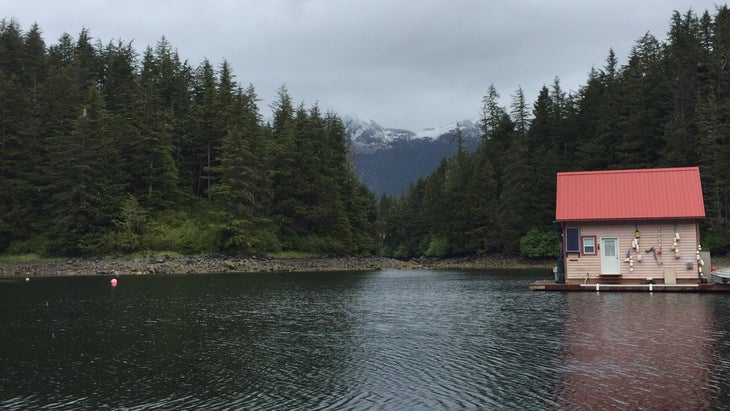Jobs
The Climate Corps Is Hiring. We Found the Six Coolest Jobs.

There are a lot of reasons I wish I were 25 again, and now I can add President Biden’s newly launched American Climate Corps (ACC) to the list. For anyone interested in climate action, climate science, or even outdoor recreation, it’s the ultimate post-grad gap year experience.
“You’ll get paid to fight climate change, learning how to install those solar panels, fight wildfires, rebuild wetlands, weatherize homes, and so much more,” the president said at an Earth Day press conference. “It’s going to protect the environment to build a clean energy economy.”
What Is the American Climate Corps?
The ACC is the modern day version of President Franklin D. Roosevelt’s Civilian Conservation Corp (CCC), which is widely considered one of the most successful aspects of the New Deal.
Roosevelt launched the CCC launched in 1933 to help pull the country out of the Great Depression by putting three million young men to work improving and protecting our public lands. CCC efforts shaped our state and national park system, planting more than 3 billion trees and building the infrastructure of the modern outdoor recreation system.
Biden has called climate change the “existential threat of our time.” He created the ACC to face that challenge head on, by putting tens of thousands of young Americans to work fighting its impacts while training a new generation of workers in the clean energy and climate resilience sectors. One key difference between the ACC and its predecessor is the fact that the ACC prioritizes equity and environmental justice. One of the big criticisms of FDR’s program was that it lacked diversity. Almost no women served in the CCC and Black people were largely segregated into separate work groups. By contrast, Biden’s ACC will prioritize communities traditionally left behind and projects that help meet the administration’s Justice40 goal, which mandates that 40 percent of the benefits of certain federal investments must flow to disadvantaged communities.
Six American Climate Corps Jobs We Covet
The White House expects to employ 20,000 people in year one, and 200,000 within five years. As of today, there are 270 jobs currently listed on the program’s website and they vary widely. You could get paid $15 per hour to learn how to install solar panels in Philadelphia, $16.92 per hour to build and maintain trails and restore wildlife habitat in Yosemite, or $26.74 an hour as a innovator fellow in the U.S. Department of Energy working to electrify transportation and decarbonize the power system. You could find a gig deep in the backcountry or one that allows you to from home. Some last for a few months, others for a year or more.
My fellow editors and I channeled our 25-year-old selves, combed through the listings, and picked our favorites.
For the Diehard Backpacker
If you hike a lot in the mountains of New England, especially along the Appalachian Trail, you’ve almost certainly interacted with Ridgerunners. You see them charging up or down the trails ferrying pack boards loaded with 80 pounds of supplies. They work on trails and monitor campsites. And they’re the hosts at the mountain huts, where they give spirited safety talks (often laced with goofy skits and songs) and serve up massive vats of carb0-heavy meals to hungry hikers.
Every time I meet a Ridgerunner—all tanned, smiling, and mountain fit—I find myself fantasizing about the gig. That’s why the American Climate Corps job I’d apply for is the Ridgerunner, where I’d spend a summer living on the trail and get paid to hike every day. Ridgerunners are kind of like park rangers: they talk to people about about Leave No Trace principles, safety and regulations, flora, fauna, weather, and so much more. Essentially, they’re professional backpackers. Count me in. —K.H.

For the Alpine Treehugger
No point hemming and hawing about this one: The whitebark pine is the best tree. The scraggly, stubborn old brutes exist, against all odds, in some of the harshest environs in the American West. In another life, I’d love to devote a career to these magnificent survivalists, and thanks to the American Climate Corps, a few lucky folks will have that opportunity. For climbers in the Sierra and the Great Basin, whitebarks are typically the last trees you’ll see before scree and snow take over the landscape. (The Mono Pass and Summit Lake route, shown below, is a great whitebark hike.) Wind-ravaged krummholz (stunted, wind-blown trees) growing out of a crack in the rock is a testament to whitebarks’ years spent in the mountains, a life well-lived.
This position will send technicians across California’s beautiful and expansive Humboldt-Toiyabe National Forest, the largest in the country, monitoring whitebarks for threats from climate change and pine beetles. And besides, trees are measured by their diameter at breast-height. Sounds like professional tree-hugging to me. —Jake Stern, Outside digital editor
For the Urban Forest Lover
As a proud AmeriCorps alum—I paid for grad school with an assignment working with the American Red Cross—I heartily endorse any program that combines community service and real-world job skills. It’s not just about the job you do, but who you do it with. Anthropologist Margaret Mead said it best: “Never doubt that a small group of thoughtful, committed citizens can change the world; indeed, it’s the only thing that ever has.” Working with passionate, motivated people who want to change the world for the better will restore your faith in humanity more than any feel-good TikTok clip, and you get paid to boot (can’t say that about watching TikTok, can you?).
Now add in time playing in the dirt—one of my favorite things in life—and you’ve got it made. What I love about the American Climate Corps Planting Specialist job in San Jose, California, is that it’s not just about being a hole-digging grunt; there’s a community education aspect to it, too. I’d be working on projects that increase tree canopy and promote soil and water conservation and also recruiting and training community volunteers. That was one of the best, most rewarding parts of my AmeriCorps experience. Equipping others with the knowledge and skills to fight climate change is an important part of this program. After all, many hands make light work, especially if that work is planting millions of trees. —Susan Lacke, Triathlete senior editor
For the Fan of Laser Light Shows
Have you checked out the trippy three-dimensional maps created by Light Detection and Ranging (LiDAR) technology? It’s like staring at a psychedelic black-light poster of your neighborhood. For those unfamiliar with LiDAR, here’s how it works. A pulsing laser flashes light beams on an area, and the rebounding light creates precise three-dimensional images of terrain, houses, and even vegetation, all in cool shades of pink, yellow, red, and orange. Scientists use the tech to chart a wide range of ecological studies, from wildfire prevention to erosion management.
I love looking at LiDAR maps—it’s like you’re magically transported to a Sound Tribe Sector 9 laser light show. I don’t know whether the Climate Corps allows you to crank the Bassnectar while you work, but if you do, the below jobs could be of interest.
If I were seeking a Climate Corps job, I’d choose one of the five LiDAR Monitoring Program positions open for 2024. According to the site, you can grab one of these positions in Portland, Oregon; Albuquerque, New Mexico; Atlanta, Georgia; Hadley, Massachusetts; or Sacramento, California. My pick: Sacramento, due to the important work around wildfire prevention. —Fred Dreier, Outside articles editor
For the Fisherwoman Who Dreams of Salmon, Old Growth, and Big Mountains
The world is full of mind-blowing ecosystems and marvelous creatures. But the temperate rainforest may be one of the most incredible places of all. The city of Sitka, on Baranof Island in southeast Alaska, faces the Pacific Ocean to the west and is surrounded by the Tongass National Forest to the east. There, Sitka spruce and Western hemlock shelter dense, damp green forests, which give way to the dramatic peaks of the Coast Range. But as dreamy as Alaska may be, this isn’t just about location: the job, a fisheries internship focused on waterway restoration and natural resource preservation and conservation, is very cool. The salmon population, like all ocean fish populations, is under immense pressure thanks to climate change, commercial fishing, and more.

As a fisheries intern, you get to be up close and personal with these remarkable animals, studying their habitat and monitoring their populations. But you also get to connect with the local community—you’d be specializing in subsistence fishing, which in Alaska refers to the “noncommercial customary and traditional uses” of salmon. Any Alaska resident can qualify for subsistence fishing permits, which allow the harvest of fish to eat and share within their community, among other personal uses. The Tlingit people, who are indigenous to the Sitka area, have long harvested salmon for subsistence and ceremonial purposes, and this job will involve connecting with the organization’s tribal partners and Indigenous youth. It’s a win-win: working someplace beautiful for the sake of wild fish, healthy coastal waterways, and the locals. —Abigail Barronian, Outside senior editor
For the Budding Bug, Bat, Butterfly and Botany Buff
I spent the first year after college on a conservation corps crew doing trail maintenance in Washington state, and while it was great (twist my arm, I’ll spend every day on beautiful trails in Olympic National Park), I’m honestly not sure I’d pick it over some of these Climate Corps postings.
If I were to dust off the ol’ work boots and head out into the field, I’d want to be the Rocky Mountains Youth Corps’ Rare Plant and Pollinator Intern. I’d be based in Taos, New Mexico, which is absurdly gorgeous and has great access to hiking, skiing, mountain biking, camping, and all sorts of other outdoor activities on your weekends.
For the actual job part, I’d be assisting the local BLM ecologist and botanist with their work: surveying rare plants; monitoring monarch butterflies, bat acoustics, and pollinators; leading groups of volunteers; and learning to use different data collection technology. I’d get to learn all about the local ecology, plus gain actual on-the-job skills that would prepare you for future conservation research and fieldwork, and work and play in a beautiful place while I did it. It’s everything you could ask for from a year of outdoorsy professional development. —Miyo McGinn, Outside assistant editor
Doing right by the planet can make you happier, healthier, and—yes—wealthier. Outside’s head of sustainability, Kristin Hostetter, explores small lifestyle tweaks that can make a big impact. Sign up for her twice monthly newsletter or write to her at climateneutral-ish@outsideinc.com.









